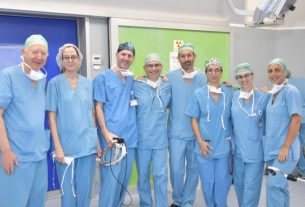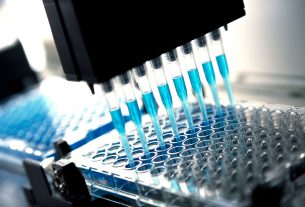Air conditioning can feel heaven-sent on hot summer days. It keeps temperatures comfortable and controls humidity, making indoor environments tolerable even on the most brutally warm days.
But some people avoid using air conditioning (AC) no matter how hot it gets outside, out of fear that it will make them sick. While this may sound far-fetched to some, as a microbiologist I can say this fear isn’t altogether unfounded.
If an air conditioning system malfunctions or isn’t properly maintained, it can become contaminated with infectious microbes. This can turn your AC unit into a potential source of numerous airborne infections – ranging from the common cold to pneumonia.
Sick buildings
“Sick building syndrome” is the general name for symptoms that can develop after spending extended periods of time in air-conditioned environments. Symptoms can include headaches, dizziness, congested or runny nose, persistent cough or wheeze, skin irritation or rashes, trouble focusing on work and tiredness.
The condition tends to occur in people who work in office settings, but can happen to anyone who spends extended periods of time in air-conditioned buildings such as hospitals. The symptoms of sick building syndrome tend to get worse the longer you’re in a particular building, and are alleviated after you leave.
A 2023 study from India compared 200 healthy adults who worked at least six-to-eight hours per day in an air-conditioned office with 200 healthy adults who didn’t work in AC. The AC group experienced more symptoms consistent with sick building syndrome over the two-year study period – particularly a higher prevalence of allergies. Importantly, clinical tests showed those who were exposed to AC had poorer lung function and were absent from work more often, compared with the non-AC group.
Other studies have confirmed that AC office workers have a higher prevalence of sick building syndrome than those who do not work in an air-conditioned environment.
It’s suspected that one cause of sick building syndrome is malfunctioning air conditioners. When an AC unit isn’t working properly, it can release allergens, chemicals and airborne microorganisms into the air that it would normally have trapped.
Malfunctioning air conditioners can also release chemical vapours from AC cleaning products or refrigerants into the building’s air. Chemicals such as benzene, formaldehyde and toluene are toxic and can irritate the respiratory system.
Poorly maintained air conditioning systems can also harbour bacterial pathogens which can cause serious infections.
Legionella pneumophila is the bacteria that causes Legionnaires’ disease – a lung infection contracted from inhaling droplets of water containing these bacteria. They tend to grow in water-rich environments such as hot tubs or air conditioning systems.
Studio Romantic/ Shutterstock
A Legionella infection is most often caught in communal places such as hotels, hospitals or offices, where the bacteria have contaminated the water supply. Symptoms of Legionnaires’ disease are similar to pneumonia, causing coughing, shortness of breath, chest discomfort, fever and general flu-like symptoms. Symptoms usually begin to show between two and 14 days after being exposed to Legionella.
Legionella infections can be life-threatening and often require hospitalisation. Recovery can take several weeks.
Fungal and viral infections
The accumulation of dust and moisture inside air conditioning systems can also create the right conditions for other infectious microbes to grow.
For instance, research on hospital AC systems has found that fungi such as Aspergillus, Penicillium, Cladosporium and Rhizopusspecies commonly accumulate within the water-rich areas of hospital ventilation systems.
These fungal infections can be serious in vulnerable patients such as those who are immunocompromised, have had an organ transplant or are on dialysis – as well as babies who were born premature. For example, Aspergillus causes pneumonia, abscesses of the lungs, brain, liver, spleen, kidneys and skin, and can also infect burns and wounds.
Symptoms of fungal infections are mostly respiratory and include persistent wheeze or cough, fever, shortness of breath, tiredness and unexplained loss of weight.
Viral infections can also be caught from air conditioning. One case study revealed that children in a Chinese kindergarten class were infected with the norovirus pathogen from their AC system. This caused 20 students to experience the stomach flu.
While norovirus is usually transmitted through close contact with an infected person or after touching a contaminated surface, in this instance it was confirmed, unusually, that the virus was spread through the air – originating from the air conditioning unit in a class restroom. Several other cases of norovirus being spread this way have been reported.
However, air conditioners can also help stop the spread of airborne viruses. Research shows AC units that are regularly maintained and sanitised can reduce circulating levels of common viruses, including COVID.
Another reason AC may increase your risk of catching an infection is due to the way air conditioners control humidity levels. This makes inside air drier than outside air.
Spending extended periods of time in low-humidity environments can dry out the mucus membranes in your nose and throat. This can affect how well they prevent bacteria and fungi from getting in your body – and can leave you more vulnerable to developing a deep-tissue infection of the sinuses.
Air conditioners are designed to filter air contaminants, fungal spores, bacteria and viruses, preventing them from entering the air we breathe indoors. But this protective shield can be compromised if a system’s filter is old or dirty, or if the system isn’t cleaned. Ensuring good AC maintenance is essential in preventing air-conditioner-acquired infections.



